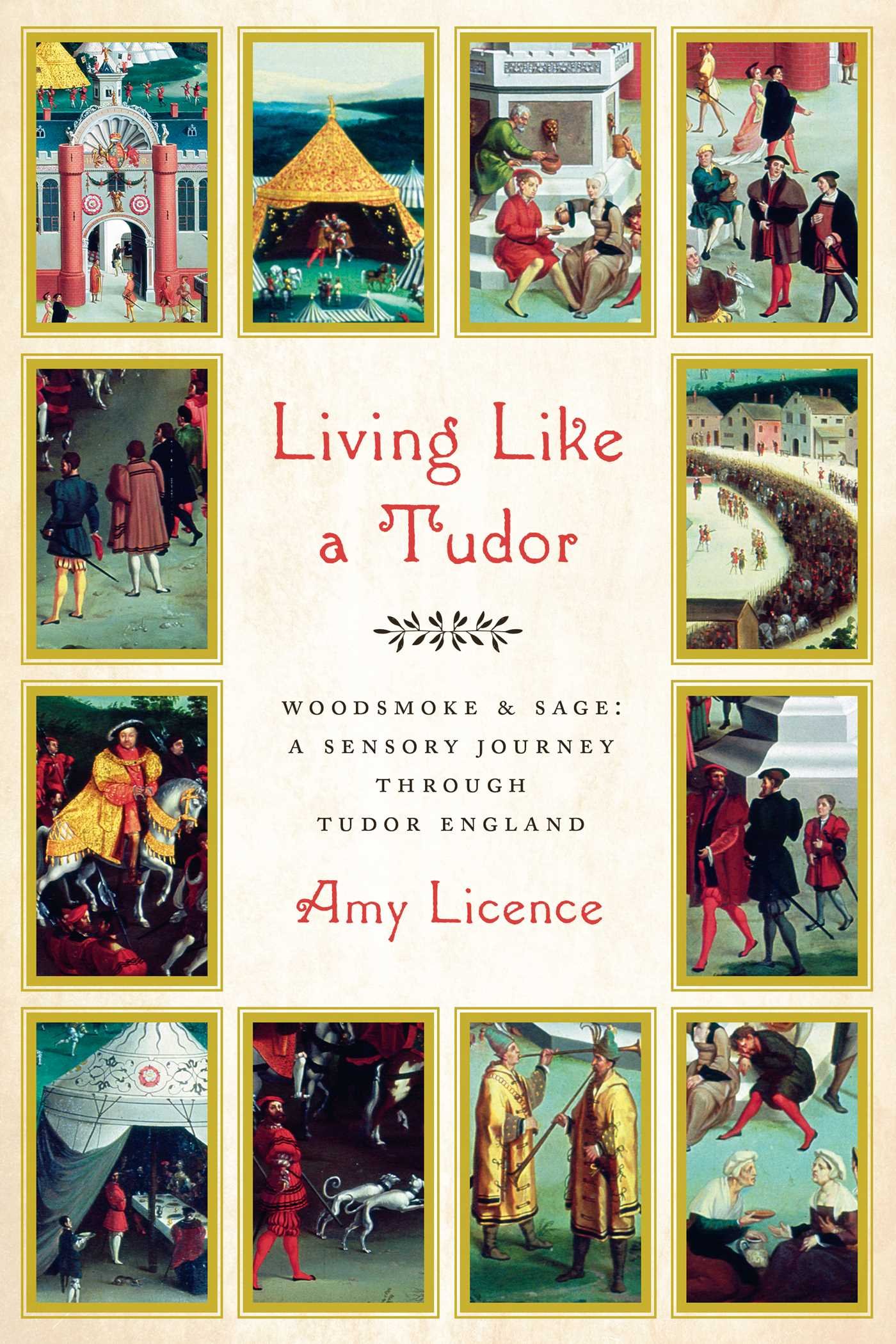Living Like a Tudor by Amy Licence
/Living Like a Tudor: Woodsmoke & Sage: A Sensory Journey Through Tudor England
By Amy Licence
Pegasus Books, 2021
Readers coming to Amy Licence’s book Living Like a Tudor and seeing that they’re promised a sensory journey through Tudor England will immediately wonder which kind of book this is: a serious study of what the experienced world was like for the inhabitants of Tudor England, necessitating a methodical crawl through parish registers and scattered private household accounts, or something of a swan-glide across the glittering surface of the era’s richest and most powerful handful of individuals … well, those readers won’t have long to wait before they get their answer. Licence’s book begins like this: “Woodsmoke and sage, peacocks and cinnamon, falcons and linen. These were the textures of the Tudor world …”
Always tricky to extrapolate odds from historical records, so the exact percentages might be off by a point or two, but nevertheless: it’s safe to say that a whopping 99% of the inhabitants of Tudor England had no idea what linen or falcons felt like, had never tasted cinnamon, and wouldn’t have been able to identify a peacock if they were right at that moment urinating on one. So the quick answer is: it’s the swan-glide, not the methodical crawl.
It’s an entertaining swan-glide, at least. Licence has read widely in histories of the period and various royal rolls and presents a broad picture of the Tudor era grouped around sight, smell, sound, taste, and touch. The fact that it’s mostly what was seen, heard, smelled, tasted, and touched by the Duke of Norfolk doesn’t lessen the entertainment. Dukes of Norfolk have to eat too, after all, and it’s interesting to know what they ate, how they ate it, and maybe even what they did about it in the bathroom later on.
What the Duke of Norfolk ate; what Princess Mary’s very best gowns were made of; what was being heaved through the supply-doors of Hampton Court Palace in preparation for some mammoth feast … all of this is endlessly interesting, and Licence writes it all up with a good deal of spirit, despite lapses like this:
For the Tudors, clothing was not so much an extension of the self but a direction of it, a declaration of the way the individual wished to travel. It was the quickest method of social classification, a construct of worth, used paradoxically to both transgress social boundaries and demonstrate conformity. Where adornment was a form of performance, the Tudors’ use of clothing represented an extraordinary act of Renaissance self-fashioning.
Despite that parting glance at Stephen Greenblatt, the technical term for a paragraph like this is gibberish. “Used paradoxically to both transgress social boundaries and demonstrate conformity”? As opposed to “bundling up because it’s as cold as the moon’s backside”? “A declaration of the way the individual wished to travel”? As opposed to “Juniper beans, it’s hot tonight”? Clothing might have been a performance among the ultra-monied 1% in Licence’s spotlight – just like it is today, as a glance at the Oscars red carpet will confirm – but readers hungry to know what a miller in Huddersfield ate for breakfast or paid for the clothes he wore at his daughter’s wedding will find precious little to satisfy them in these pages. They’ll suspect one thing beyond doubt: if caught in the wrong mood, that miller might have thumbed out the eyeball of somebody who started monologuing about Renaissance self-fashioning.
The enormous majority of people in Tudor England lived in close connection with the soil, working every day, almost certainly concerned with a hundred different things that never needed to cross the mind of the Duke of Norfolk. And even the things they held in common tend to elude the grasp of this book. Take the most obvious one: everybody stank. According to Licence, it’s all relative:
Most Tudors would hardly have noticed the smell, as they were used to this assault upon their nostrils. In the modern world, our default setting is to eradicate many of our natural smells, and we fastidiously cover what we perceive to be unpleasant odours with manufactured scents such as air fresheners and laundry conditioner, deodorants and perfumes. Yet if we reflect upon the question, ‘What is clean?’ or ‘What does it mean for a person or item to be clean?’, even today, individuals might disagree. Standards of hygiene differ.
Leave aside that air fresheners are not scents; leave aside that “What is clean?” and “What does it mean for a person or item to be clean?” are the same question. Concentrate instead on that “Standards of hygiene differ” and the fundamental dodge it represents in a book purporting to examine the sensory world of a past era. Standards of hygiene differ, yes, but what were that Huddersfield miller’s standards of hygiene? What would it have taken for him to look at one of his children and say “You should stand under the water pump for a bit”? Would he ever have looked at his dinner plate and thought “I should clean this before I eat off it”?
When it comes to questions like this, Living Like a Tudor feels like a missed opportunity. But Amy Licence is a lively guide, and hey, it’s always nice to check in on the Duke.
—Steve Donoghue is a founding editor of Open Letters Monthly. His book criticism has appeared in The Washington Post, The American Conservative, The Spectator, The Wall Street Journal, The National, and the Daily Star. He writes regularly for The Boston Globe, the Vineyard Gazette, and the Christian Science Monitor. He’s a books columnist for the Bedford Times Press and the Books editor of Big Canoe News in Georgia, and his website is http://www.stevedonoghue.com.
